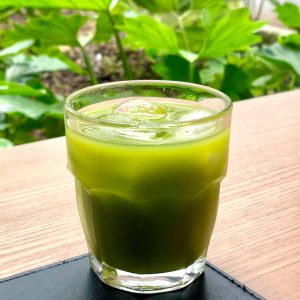
This term is commonly used in wine, but it also applies to tea.
Astringency isn’t a flavor, but rather a sensation in the mouth and throat. It’s often described as a puckery and dry feeling.
The easiest way to experience astringency is to taste a green banana peel.
Note that astringency isn’t the same as bitterness. These two are often confused.
Since astringency is not one of the five basic tastes (sweet, sour, bitter, salty, and umami), it’s closer to spiciness (pungency), for example.
In the Japanese language it’s called shibumi (渋み) and it is a commonly used word.
What factors affect astringency in green tea?
Polyphenols are the main source of astringency. And catechins are the most abundant polyphenols in green tea.
Some of the catechins in green tea are also bitter as well as astringent, like EGCG which accounts for most of the catechin content.
In other words, there is a direct correlation between astringency and bitterness.
Generally, high bitterness in tea is associated with low quality. Think of a low quality green tea bag, for example.
Excessive astringency is also undesirable, but at moderate levels it is necessary as it enhances the mouthfeel of tea, making the overall flavor last longer.
In Japanese green tea cultivation and processing, higher quality teas are achieved by increasing the amount of amino acids as opposed to catechins.
Later harvests, lower quality plucking, no shading process, incorrect rolling, etc., result in green teas that are more bitter and astringent, with less umami taste.
The goal of the brewing method for green tea itself also focuses on reducing bitterness and astringency. That’s why sencha, for example, isn’t infused with boiling water nor for a long time.

February 11, 2020
Good explanation. Thanks!
February 11, 2020
Hi Bill, thanks for reading.
February 11, 2020
Thanks Ricardo, another fine informative article about Japanese green tea! Cheers.
February 11, 2020
Hi Patrick, glad that you liked it 🙂
February 12, 2020
fantastic ! i liked your explanation
February 12, 2020
Thank you Arun.